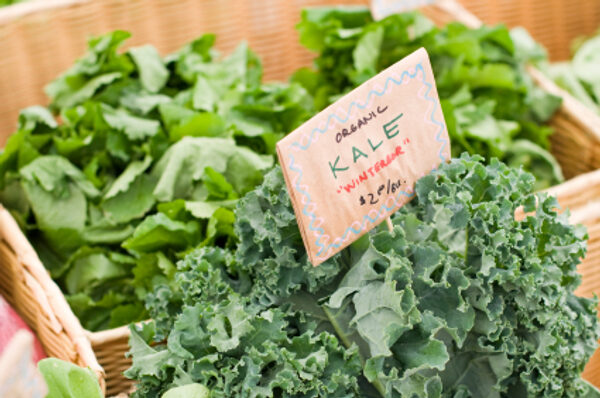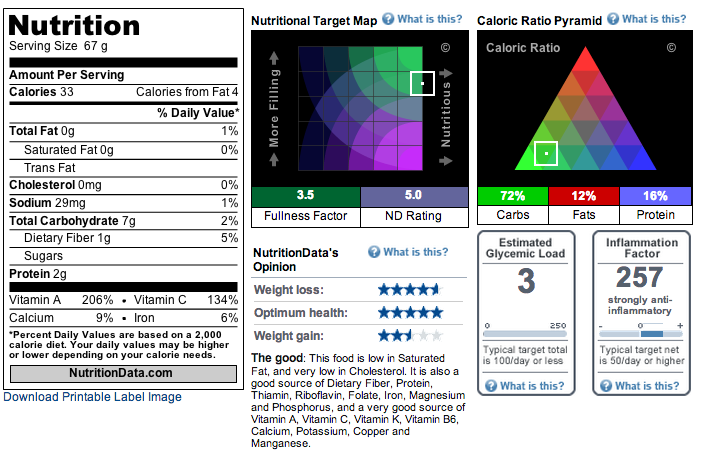When I was a kid, I remember going out to dinner, and seeing this curly green stuff lining the plate. Presumably, it was placed there as a basic garnish, to fill the plate out. I never realized that it was possible to eat the stuff.
 The “stuff” I’m talking about is kale. For the past several years, John and I have incorporated kale in our diet on an almost-daily basis. And, there are plenty of good reasons why you should too.
The “stuff” I’m talking about is kale. For the past several years, John and I have incorporated kale in our diet on an almost-daily basis. And, there are plenty of good reasons why you should too.
Nutritional profile
Kale is a low-calorie, nutrient dense food, with only about 33 calories per 1-cup serving, but with a broad array of vitamins, minerals, anti-oxidants and anti-inflammatory compounds.

Despite such a low calorie count, Kale packs in the nutrients. It is rich in vitamins A, C, K, B6. It also provides helpings of iron, calcium, folate, manganese, copper, and phosphorous. In fact, per calorie, Kale has more iron than beef and more calcium than milk!
Health Benefits
All of these nutrients means there are ample health benefits that can be realized by incorporate some kale into your diet. Some have dubbed this green as the healthiest food on the planet. Given all of the nutrients packed into one serving, it’s no wonder that more and more people have begun to make kale a regular staple in their daily diet.
Kale is heart healthy. Due to a mix of its dietary fiber and anti-inflammatory properties, it has been shown to lower cholesterol levels.
Kale is a cancer fighter, thanks to all those wonderful anti-oxidants.
Kale is high in Vitamin K, which has been shown to help fight alzheimers and cancer, and is linked with improving bone health and preventing blood clots.
Kale is cleansing, given the presence of iron, sulfur and fiber. This cleansing function is particularly beneficial for your liver.
Kale is good for your eyes, thanks to the presence of lutein and zeaxanthin.
Tips for Preparing Kale
Kale Chips
One of the easiest and most delicious ways to prepare this green is kale chips. Prepare the kale by ripping the leaves off the stem, and then chopping it into bite size pieces. Spread the kale onto a cookie sheet, drizzle with olive oil, sea salt, and other seasonings of your choice, such as garlic or onion powder, old bay seasoning, cumin, or cayenne pepper to name a few. Bake at 400 degrees until crispy, about 10-15 minutes.
Sauteed Kale
Another option is to saute the kale. Prepare the kale similar as you would for the chips, then saute in a pan with olive oil, chopped garlic and onions.
Soups and Salads
Add chopped kale to your favorite soups. It goes wonderfully with bean soups. It cooks down quite a bit, so you will want to add in the kale in the last 10-20 minutes of cooking.
You can also add chopped, raw kale to your salads for an extra crunch. In its raw form, you are guaranteed to get the most significant nutritional benefits.
Veggie Smoothies or Juice
For those of you with a juicer, you can also make kale juice. Even if you don’t have a juicer, you can make a veggie smoothie with kale. For example, mix 1-2 kale leaves (stems removed) with chopped cucumber, tomato and blueberries. Add chia seeds and spirulina for an extra nutritional punch. Add water, soy milk or almond milk (depending upon how creamy you’d like it), and blend until smooth. If you’d like a bit more sweetness, you can add some organic honey to the mix.
